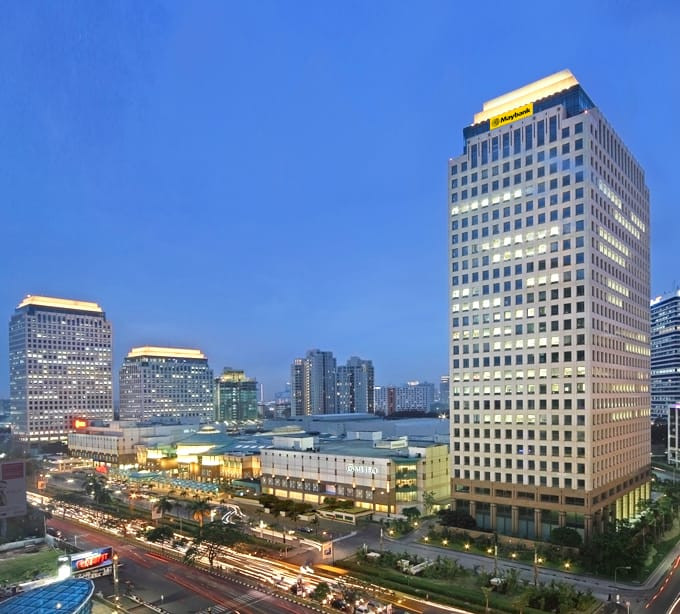Popular Reads
Top Results
Can't find what you're looking for?
View all search resultsPopular Reads
Top Results
Can't find what you're looking for?
View all search resultsMaybank Indonesia records profit in first nine months of fiscal year 2022
Today, PT Bank Maybank Indonesia, Tbk. (Maybank Indonesia) announced its consolidated financial results for the nine months until Sep. 30, 2022.
Change text size
Gift Premium Articles
to Anyone
T
oday, PT Bank Maybank Indonesia, Tbk. (Maybank Indonesia) announced its consolidated financial results for the nine months until Sep. 30, 2022. It was revealed that Maybank Indonesia recorded Rp 1.48 trillion (US$95.24 million) in profits before tax (PBT) and profits after tax and minority interest (PATAMI) of Rp 1.06 trillion.
Both PBT and PATAMI are therefore considered stable when compared with last year's results. While loans are showing growth, interest income has been reduced to lower loan yields as a result of rigid competition for loans.
However, the Bank has also booked lower provisions as loan quality improved and well-contained overheads. The Bank’s net interest margin (NIM) also showed slight progression by 2 basis points (bps) to 4.8 percent in September 2022 due to lower costs of funds.
The Bank’s fee-based income excluding global market fees was recorded at Rp1.23 trillion, attributed to loan and retail business-related fees and fees from subsidiaries. However, the Bank’s global market fees showed a 63.7 percent decline due to the global interest rate investment and volatile market conditions, with a decrease of total fee income by 10.4 percent year-on-year (yoy).
Trade and business activities continued to show progressive trends throughout the nine months, followed by increasing demand for loans for large scale enterprises and corporations, as well as retail loans with the improvement in public consumption. These external factors resulted in a significant increase in the Bank’s total outstanding loans, which grew 12.8 percent to Rp 111.45 trillion from Rp 98.78 trillion last year.
Maybank Indonesia’s banking segment grew exponentially by 25 percent from Rp 36.5 trillion to Rp 45.63 trillion to finance various projects and business expansions including in infrastructure, manufacturing and global trading.
The Bank also grew in the community financial services (CFS) loan segment, comprising retail and non-retail segments, from Rp 62.29 trillion to Rp 65.81 trillion in the same period last year, showing a 5.7 percent growth.
In non-retail loans for small and medium enterprises (SMEs), there was also another 5.7 percent growth from Rp 12.07 trillion to Rp 12.76 trillion. Meanwhile, the larger loan segment in SMEs also showed 1.3 percent growth from Rp 5.01 trillion to Rp 5.08 trillion as business and market activities resumed.
In an effort to rebalance its non-retail loan portfolio segment, the Bank focused on loan disbursement to smaller segments, ensuring a more effective use of loans to support customers’ business continuity. Subsequently, the business banking loans portfolio experienced a 14.9 decrease that resulted in a 3.6 percent yoy decrease in the overall balance of the CFS non-retail loan segment.
Meanwhile, the Bank’s consolidated CFS retail loan segment grew by 13.8 percent to Rp 37.74 trillion, backed by strengthening consumer purchasing power. The Bank’s credit card grew in business and personal loans by 12.5 percent to Rp 2.83 trillion. It was followed by subsidiaries' automotive financing of 20 percent (Rp 18.33 trillion). Mortgage loans have also shown growth from early 2022, showing an impressive 8.2 percent growth to Rp 16.03 trillion from the same period in the previous year.
Total customer deposits grew 5 percent to Rp 107 trillion with current account saving account (CASA) growing 21.6 percent with current accounts increasing 33.9 percent to Rp 32.44 trillion and savings accounts increasing 7.6 percent to Rp 22.93 trillion.
On the other hand, time deposits are observed to have declined 8.4 percent to Rp 51.63 trillion from Rp 56.34 trillion last year. This is due to the Bank’s consistent strategy to maintain low-cost funding through leveraging the Bank’s digital services to acquire customer deposits. Accordingly, the Bank’s CASA ratio improved and was higher at 51.8 percent in September 2022.
With improvements in the overall economic outlook, the Bank recorded a decrease in provisions for impairment losses by 23.1 percent to Rp 818 billion in line with the Bank’s success in restructuring efforts for pandemic-impacted customers’ loans.
The Bank’s consolidated non-performing loan (NPL) ratio improved to 3.5 percent (gross) and 2.5 percent (net) with a decrease in NPL balances by 16.3 percent yoy. The Bank maintained its prudent banking approach and conservative risk posture.
Overhead costs remain under control at Rp 4.33 trillion even as businesses return to pre-pandemic normalcy. The Bank continues to implement sustainable cost management measures across its entire operations and initiatives to ensure every expense contributes to an increase in revenue.
Liquidity remains strong with its bank-only loan to deposit ratio (LDR) at a healthy level of 90.2 percent, while its bank-only liquidity coverage ratio (LCR) stood at 176.9 percent in September 2022, exceeding the minimum level of 100 percent for regulators. Meanwhile, the capital adequacy ratio (CAR) remained strong at 24.7 percent in September 2022, with a total capital of Rp 28.02 trillion.
The Bank also showed considerable growth in digital platforms. Financial transactions through the Bank’s digital banking platform for retail customers, M2U, registered an increase in transactions of 24.8 percent to approximately 13.1 million. Meanwhile, the Bank’s digital platform for corporate customers, M2E, registered an increase in transactions of 32.2 percent to more than 3.1 million.
In the third quarter of 2022, Maybank Indonesia announced that it will introduce various new features on M2U including real-time BI-FAST transfer and credit card add-on features, such as converting credit card transactions into installments and increasing credit card limits.
Maybank Indonesia’s Syariah banking unit also grew in assets by 7 percent to Rp 39.67 trillion, contributing total assets to the Bank’s individual assets of 25.7 percent. The segment’s financing also grew 12.8 percent to Rp 27.98 trillion while the CASA grew significantly by 37.3 percent to Rp12.40 trillion.
“During the period, Maybank Indonesia focused on our growth strategies, which have contributed to the Bank’s profitability. We will remain disciplined in maintaining our liquidity and capital, while at the same time continue with our efforts to drive business growth by strengthening our productivity across the Bank’s key business segments, and our digital transformation to increase our operational and business agility, enabling us to navigate the challenges and opportunities ahead.” said president director of Maybank Indonesia, Taswin Zakaria.
Meanwhile, president commissioner of Maybank Indonesia, Dato Khairussaleh Ramli, has observed Maybank Indonesia’s resilience and ability to capture growth opportunities post-pandemic by booking strong loan growth in its key business segments for nine months in 2022.
“Indonesia is a huge market with tremendous opportunities, and we see traction in our growth
momentum. Given Indonesia’s potential, backed by the Bank’s strong fundamentals, and sound risk management, I am confident that Maybank Indonesia will be able to navigate through any potential market volatility it may experience in the coming quarters,” he added.










